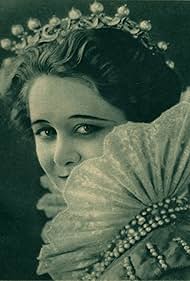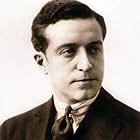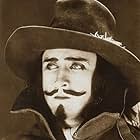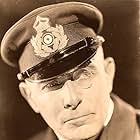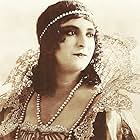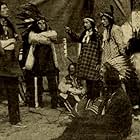Le vert galant
YOUR RATING
Photos
- Director
- Writer
- All cast & crew
- Production, box office & more at IMDbPro
Storyline
Did you know
- TriviaThe horses and carriages were provided by the King of Spain.
Featured review
You needed an ample shopping-basket if you wento buy this film for home-watching on your Pathé-Baby (32 reels) but the good news was that you got - far from usually the case with Pathé-Baby versions - pretty much the whole film as it had been orginally produced (86 minutes' worth). This is the version I have seen and I do not know whether any other exists but it is a cracking film. In the first place it is a good story (by the man who would go n to write Fanfan le Tulipe in 1926 - also filmed by LePrince) in magnificent locations very well acted.
The story is that of Henry of Navarre (le Béarnais), the Hugenot (protestant) who became King of France after the assassination of Henri III, famously agreeing, after his victory in the field, to attend Catholic mass as a means of ensuring his acceptability to the people of Paris (and of France as a whole) as their King.
He is one of the most colourful and attractive figures in French history and is played to perfection by Aimé Simon-Gérard (an opera singer as well as an actor) who portrays both Henri's tolerance and generosity but also suggests very effectively his predatory sexual nature without making him seem just a simple lecher. Renée Héribel is lovely as Dolorès even if whe does not have that much to do apart from looking lovely. Claude Mérelle is excellent a the sheming Montpensier and the two real villains of the film - Albert Mayer as Ruggieri (ridiculously low down on the cast list as published here) and Maurice Shcutz as le Grand Inquisiteur - are first-rate.
The great strengths of the French when it cam to historical drama was 1) the depth of acting brought to bear by actors and actresses with considerable theatre-experience (largely lacking in US film until the advent of the talkies) 2) wonderful location-shooting (as opposed to the very studio-bound US apprach) and 3) much greater historical accuracy in relative terms, at any rate, than Hollywood could ever be bothered to attempt. It is a crying shame that such French films of the late teens and twenties are not better known and a very black mark against the French studios and archives who for different reasons cling grimly to the films in heir possession without making them freely available as they should be. This is one of the principal reasons why US film continues to have a greatly inflated reputation and appears to occupy a far more dominant position than it genuinely had. Those who detain the rights but do not diffuse the films are not only guilty of quite pointless meanness (they are never going to make huge amounts of money out of these films) with regard to the film-watching public (a growing public for all silent films) but also of criminal negligence with regard to the work of film critics and historians and even a kind of base treachery towards their won country whose films they prevent from being known as they should be...
The story is that of Henry of Navarre (le Béarnais), the Hugenot (protestant) who became King of France after the assassination of Henri III, famously agreeing, after his victory in the field, to attend Catholic mass as a means of ensuring his acceptability to the people of Paris (and of France as a whole) as their King.
He is one of the most colourful and attractive figures in French history and is played to perfection by Aimé Simon-Gérard (an opera singer as well as an actor) who portrays both Henri's tolerance and generosity but also suggests very effectively his predatory sexual nature without making him seem just a simple lecher. Renée Héribel is lovely as Dolorès even if whe does not have that much to do apart from looking lovely. Claude Mérelle is excellent a the sheming Montpensier and the two real villains of the film - Albert Mayer as Ruggieri (ridiculously low down on the cast list as published here) and Maurice Shcutz as le Grand Inquisiteur - are first-rate.
The great strengths of the French when it cam to historical drama was 1) the depth of acting brought to bear by actors and actresses with considerable theatre-experience (largely lacking in US film until the advent of the talkies) 2) wonderful location-shooting (as opposed to the very studio-bound US apprach) and 3) much greater historical accuracy in relative terms, at any rate, than Hollywood could ever be bothered to attempt. It is a crying shame that such French films of the late teens and twenties are not better known and a very black mark against the French studios and archives who for different reasons cling grimly to the films in heir possession without making them freely available as they should be. This is one of the principal reasons why US film continues to have a greatly inflated reputation and appears to occupy a far more dominant position than it genuinely had. Those who detain the rights but do not diffuse the films are not only guilty of quite pointless meanness (they are never going to make huge amounts of money out of these films) with regard to the film-watching public (a growing public for all silent films) but also of criminal negligence with regard to the work of film critics and historians and even a kind of base treachery towards their won country whose films they prevent from being known as they should be...
Details
- Color
- Sound mix
- Aspect ratio
- 1.33 : 1
Contribute to this page
Suggest an edit or add missing content

